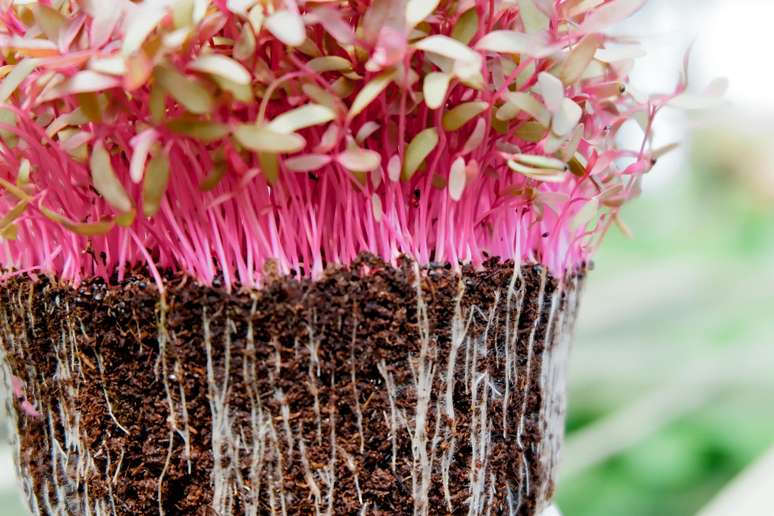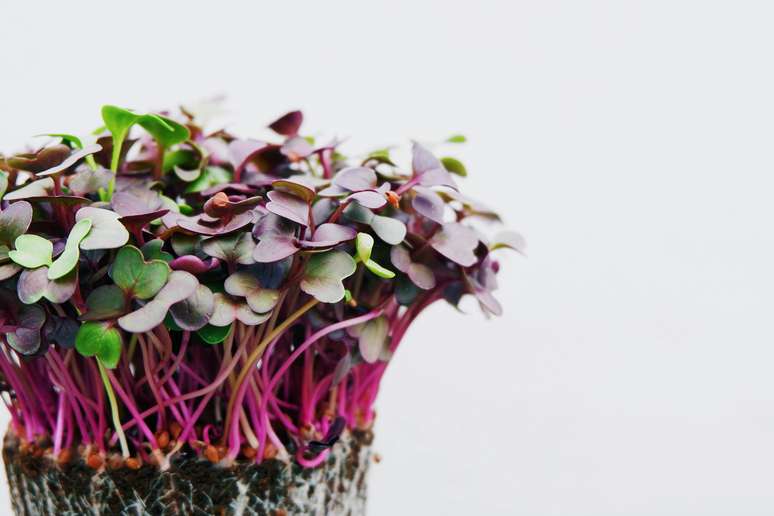Microgreens (vegetables, herbs and spices grown within days of planting) could become the future of food. Understand!
Have you ever heard of “microgreens”? This term refers to vegetables, aromatic herbs and spices grown and harvested a few days after sowing, before they develop the cotyledonary leaves (the first to form), when they reach a length of between 5 and 10 cm.
“Studies show that these plants have a nutritional content equal to or greater than 40 times their adult equivalent (ripe vegetables). They concentrate macro and micronutrients, are rich in phytochemicals, vitamins and minerals that provide ample antioxidant power, with possible antibacterial, antidiabetic and anti-inflammatory”, explains the nutritionist Dr. Marcella Garcezdirector and teacher at Brazilian Association of Nutrology (ABRAN).
A recent study has shown that microgreens hold promise for sustainable food production in climate-vulnerable regions. “Microgreens”, as they are also called, have been present in Brazil since 2018 and, according to estimates by USP researchers, today the number of producers dedicated to cultivation is around 500 professionals.
The same study also positions microgreens as the superfood of the future. “This is justified by the fact that microgreens have much more cultural versatility compared to their adult forms. Despite being grown predominantly in controlled greenhouse environments, these foods it can be grown in any environment with stable temperature (< 20 °C) and humidity“, explains the nutritionist.

“This brings the advantage of urban agriculture, which offers fresher food and reduces the impact of polluting emissions into the atmosphere by reducing the use of transport from the cultivation area to sale,” explains Marcella. But beyond that, the nutritional content of these “little giants” is something to celebrate. “They have more pronounced flavor, higher levels of phytochemicals, vitamins, minerals and macronutrients, depending on which microgreen is on the agenda. Lentil microgreens, for example, can be good sources of protein (6 g of protein per 100 g),” says the doctor.
But why do they concentrate more nutrients? “Research has revealed that dormant dry seeds undergo significant biochemical and nutritional changes (accumulation, remobilization and disintegration) once germination begins. These processes cause a ‘condensation’ of nutrients in the edible parts of the plants, contributing to the surprisingly high content of nutrients from microgreens,” explains the doctor.

Also worth highlighting are the micronutrients present in microgreens. ” Brassica microgreens, a group that includes vegetables such as broccoli, radishes and cabbage, contain phytochemicals such as indoles and flavonoids, which have already been shown, according to research, to have a protective role against prostate and breast cancer in the early stages of the disease .“, explains Dr. Marcella. “The microgreens of red cabbage were highlighted in the work. Its action is important for reducing levels of inflammation in patients with high fat content in the liver, which is linked to a more exacerbated inflammatory response,” says Dr. Marcella.
As a trend for the future, the study predicts that homemade microgreens should be increasingly common, as they constitute a fascinating and sustainable alternative. “Sprouting seeds and growing salad greens is an easy hobby to try at home. Fresh, nutrient-rich vegetables can be grown upon request, eliminating the need for long-distance transportation and reducing the amount of fossil fuels consumed in product distribution. do not. I obviously mention the very high nutritional content”, says the doctor.

This trend will help reduce two of the biggest obstacles facing microgreens today: the difficulty of storing them, as they have a short shelf life, and their rapid reduction in nutritional content during storage. “In any case, microgreens have the potential to significantly reduce the resources needed to grow vegetables, improve the nutritional value of the human diet, and even shape culinary fashion, as they help color and beautify the plate,” he concludes.
Source: Terra
Ben Stock is a lifestyle journalist and author at Gossipify. He writes about topics such as health, wellness, travel, food and home decor. He provides practical advice and inspiration to improve well-being, keeps readers up to date with latest lifestyle news and trends, known for his engaging writing style, in-depth analysis and unique perspectives.





![Un Si Grand Soleil Preview: Episode Summary for Monday, October 20, 2025 [SPOILERS] Un Si Grand Soleil Preview: Episode Summary for Monday, October 20, 2025 [SPOILERS]](https://fr.web.img4.acsta.net/img/24/61/24614f00035a1444d216245e9a9c963f.jpg)


